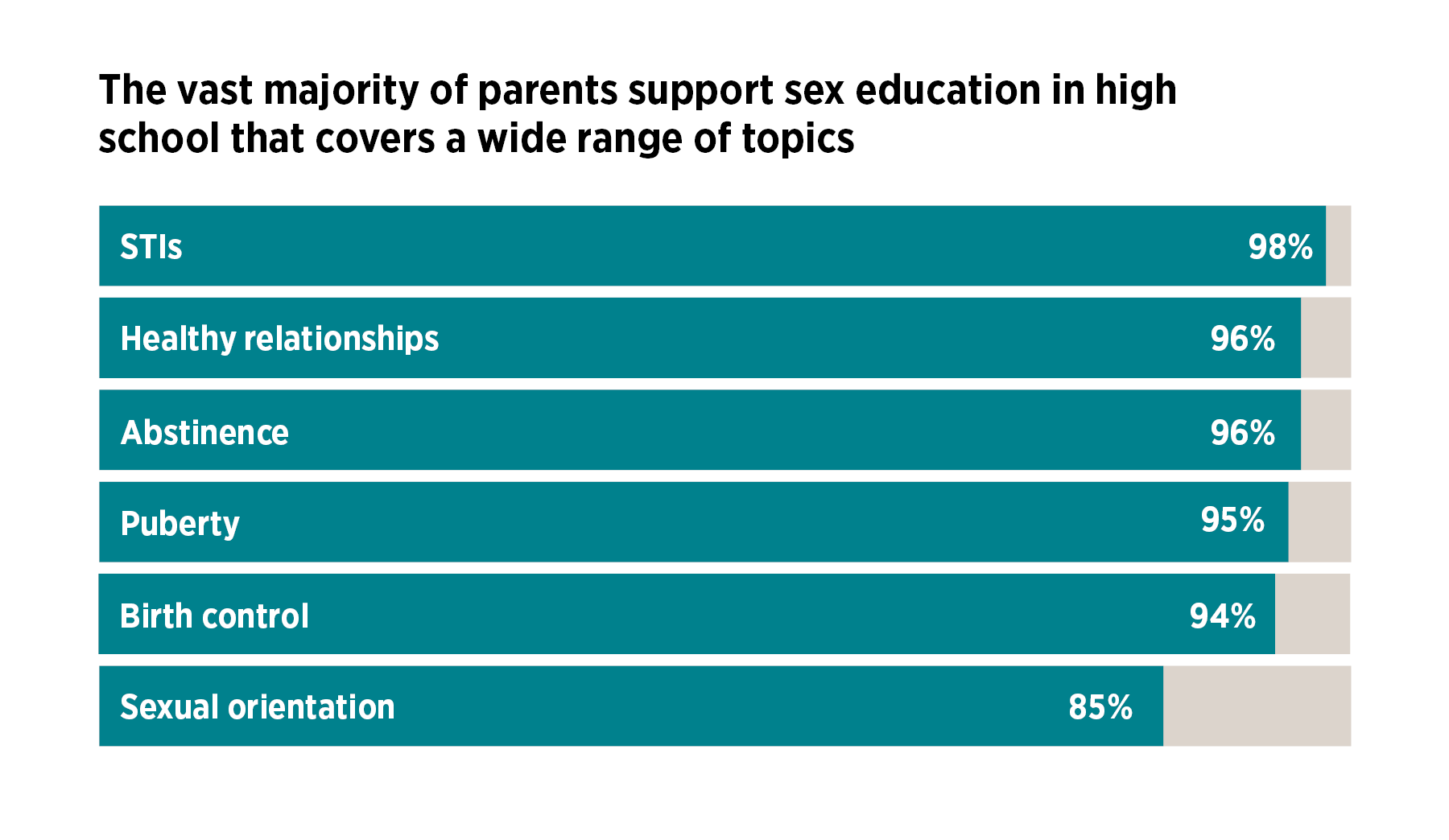All young people should have access to comprehensive sexual and reproductive health information that is medically accurate, LGBTQ-inclusive, and culturally and age appropriate so that they can make informed decisions about their sexual behavior, relationships and reproductive choices. Yet the federal government wastes $110 million per year on misleading and incomplete abstinence-only-until-marriage programs that harm young people and fail to achieve their stated goals. These programs disguise abstinence-only messaging as “sexual risk avoidance” and deny young people necessary and even life-saving information about their own bodies, reproductive health and sexuality. The federal government must eliminate all funding for these programs and use that money to fund sex education programs that offer informative and inclusive curricula.
Federally Funded Abstinence-Only Programs: Harmful and Ineffective
Reproductive rights are under attack. Will you help us fight back with facts?
How federal abstinence-only programs work
- There are two federal funding streams dedicated to abstinence-only programs: the Title V Sexual Risk Avoidance Education (SRAE) grant program, which is funded for several years at a time, and the discretionary SRAE grant program, which receives funding through annual spending bills. Both are managed by the Family and Youth Services Bureau within the Administration for Children and Families at the U.S. Department of Health and Human Services (HHS).
- The Title V SRAE program was established in 1996. Between 1998 (the first year it was implemented) and 2016, the program received $50 million annually. Since 2017, it has been funded at $75 million per year. Between state and non-state (competitive) grants, it supports grantees in 44 states and five territories.
- The discretionary SRAE program is a rebranding of the Competitive Abstinence Education grant program and was established by the 2016 appropriations bill. Funding for the program started at $5 million and has grown steadily; since 2019, it has received $35 million annually. It currently supports grantees in 15 states.
- The goal of both programs is to discourage young people from having sex before marriage. While the curricula funded through these programs must provide information that is medically accurate, they are far from comprehensive. For example, the Title V SRAE program allows grantees to discuss contraception, but they are barred from providing demonstrations of how specific methods work.
- Funds may be granted to states, territories, local governments, tribal governments, nonprofits, public and private colleges and universities, and small businesses.

Impact of abstinence-only programs
Ineffective at their stated goals
- Research shows that federal abstinence-only funding does not lower adolescent birth rates. In fact, the more that state policies emphasize abstinence-only programs, the higher the incidence of adolescent pregnancies and births.
- An HHS-funded analysis found that abstinence-only programs do not affect the incidence of pregnancy, HIV or other STIs in adolescents.
- Young people who express intentions to wait until marriage to have sex have the same rates of premarital sex, STIs, and anal and oral sex as their peers who do not take pledges. They are also less likely to use contraceptives, are at higher risk for HPV and have higher rates of nonmarital pregnancy compared with those who never pledged abstinence.
Harmful to young people
- By the end of high school, the majority (57%) of teenagers will have had sex, yet abstinence-only programs are not designed to equip them with the information about contraceptives, STIs, consent or healthy communication that they need to safely navigate these experiences.
- Abstinence-only programs promote judgment, fear, guilt and shame around sex. These programs frame premarital sexual activity and pregnancy as wrong or risky choices with negative health outcomes and seek to shame sexually active young people.
- Abstinence-only programs are often heteronormative and frame LGBTQ students as deviant. Stigma and discrimination against LGBTQ students increase their risk of HIV infection, substance use disorder, suicide and experiencing violence.
- Framing abstinence as a choice—and anything else as a failure—is isolating and cruel to students who have been coerced or forced into sexual experiences. For example, abstinence-only programs are completely unprepared to meet the needs of the one in nine girls and one in 53 boys who have experienced sexual abuse or assault by an adult.
- Many abstinence-only programs tout gender stereotypes as scientific fact and reinforce messages about male aggression and female passivity.
- Abstinence-only programs typically overemphasize the risks associated with contraception and downplay or overlook its benefits beyond pregnancy prevention, such as reducing pregnancy-related mortality and morbidity, reducing the risk of developing certain reproductive cancers, and being used to treat menstrual symptoms and disorders.
- Medical experts, including the American Medical Association, American College of Obstetricians and Gynecologists, and the Society for Adolescent Health and Medicine oppose abstinence-only programs.
- The majority of parents of high school students support instruction on a broad range of sex education topics, rather than teaching only about abstinence.
What policymakers can do
To end federal funding for abstinence-only programs and support programs that provide a more constructive approach to sex education, Congress and the Biden-Harris administration should take the following steps:
- Eliminate all funding for Title V SRAE and discretionary SRAE grants and redirect those funds to sex education programs that offer informative and inclusive curricula.
- Increase funding for evidence-based federal programs, including the Teen Pregnancy Prevention Program and the Personal Responsibility Education Program, that recognize young people’s sexual and reproductive health needs.
Figure: Vast majority of parents support sex education in high school
1. Kantor L and Levitz N, Parents’ views on sex education in schools: How much do Democrats and Republicans agree?, PLOS ONE, 2017, 12(7):e0180250, https://journals.plos.org/plosone/article?id=10.1371/journal.pone.0180250.
